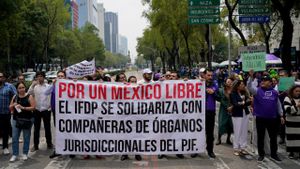For centuries, humans have been both fascinated and terrified by the sheer power of natural events like volcanic eruptions and earthquakes. These seemingly disparate phenomena can, in fact, interact in ways that sometimes defy expectations. This engrossing connection between tectonic movements and fiery volcanic outbursts is the subject of a recent intricate study that seeks to unravel the perplexing relationship between earthquakes and volcanic eruptions.
The idea that earthquakes can trigger volcanic eruptions isn't entirely new, but understanding the exact mechanisms behind this interaction has always been a complex puzzle. According to the study, " , " . The researchers have introduced a novel framework to not only recognize but also categorize the triggering processes. This innovative approach reveals that most types of volcanoes can indeed be seismically activated, under specific conditions. However, this activation is more likely to manifest as volcanic unrest rather than an outright eruption.
Why do we care about these findings? Simply put, better understanding these interactions can significantly enhance our disaster preparedness and hazard management strategies. As climate change and increasing human activities influence geological systems, predicting and mitigating the impacts of natural disasters becomes more critical than ever.
To appreciate the significance of this research, it's useful to first delve into some basic concepts. Volcanoes come in many shapes and sizes, and their eruptions can vary from gentle lava flows to catastrophic explosions. Under the Earth's crust lies a pool of molten rock called magma, which rises to the surface during an eruption. What many might not realize is that an earthquake's shockwaves can disturb this magma and set off a series of events leading to an eruption.
Previous studies have shown isolated instances where significant earthquakes have seemingly led to volcanic eruptions. For example, the massive 2004 Sumatra earthquake, one of the largest ever recorded, did not result in any immediate volcanic activities, despite its power. On the other hand, smaller quakes have been known to spark volcanic eruptions under certain conditions. Clearly, size isn't the only factor at play here.
The researchers took existing knowledge a step further by examining the underlying physical mechanisms that make such triggers possible. Utilizing historical data, laboratory experiments, and computer simulations, they sought to identify patterns and develop a classification system for volcanoes based on their sensitivity to seismic triggers.
Key to this classification are three observable parameters: the viscosity of magma, whether the system allows gas to escape easily (open or closed-system degassing), and the presence or absence of an active hydrothermal system. Magma viscosity plays a critical role in how easily it can flow and erupt. Low-viscosity magma is runny, like syrup, and can flow out gently, while high-viscosity magma is thicker and more likely to result in explosive eruptions.
An earthquake's energy can also cause rapid changes in magma due to the pressure variations it induces. This phenomenon, known as cavitation, involves the formation of bubbles in the magma as pressure drops suddenly, similar to what happens when you open a soda bottle. While the idea is simple enough, the actual process is extremely complex and influenced by many factors, including the composition of the magma and the presence of nucleation sites, which are points where bubbles can start to form.
The interplay between earthquakes and volcanoes takes on additional complexity when a hydrothermal system is involved. Think of a hydrothermal system as an underground network of water and steam heated by the magma below. Earthquakes can alter the permeability of these systems, either enhancing or inhibiting fluid flow. For instance, an earthquake might unclog fractures in the rock, allowing steam and water to move more freely and potentially leading to an eruption. Alternatively, it might clog these fractures, trapping fluids and causing pressure to build up to explosive levels.
The meticulous methods employed by the researchers include a mix of direct observations, laboratory simulations, and advanced computational models. They analyzed past instances where eruptions followed earthquakes, scrutinizing the conditions to decode the variables at play. Their experiments often involved recreating the high-pressure, high-temperature conditions of Earth's subsurface in the lab, allowing them to observe how changes in pressure and stress affected magma and hydrothermal fluids.
One of the standout aspects of their methodology was the use of statistical models to evaluate correlations between earthquakes and volcanic activity. While a mere overlap in timing doesn't imply causation, statistical tests helped strengthen the case for causal relationships. For example, by examining data from subduction zones—regions where one tectonic plate slides beneath another—they found a notable increase in volcanic activity following large earthquakes, suggesting that the mechanical stress from these quakes can indeed push volcanoes toward eruption.
The study’s findings are profound. It underscores the conditions under which seismic activity is most likely to trigger volcanic eruptions. Two significant takeaways are the importance of the volcano's critical state—its readiness to erupt—and the particular characteristics of the seismic waves involved. A "



